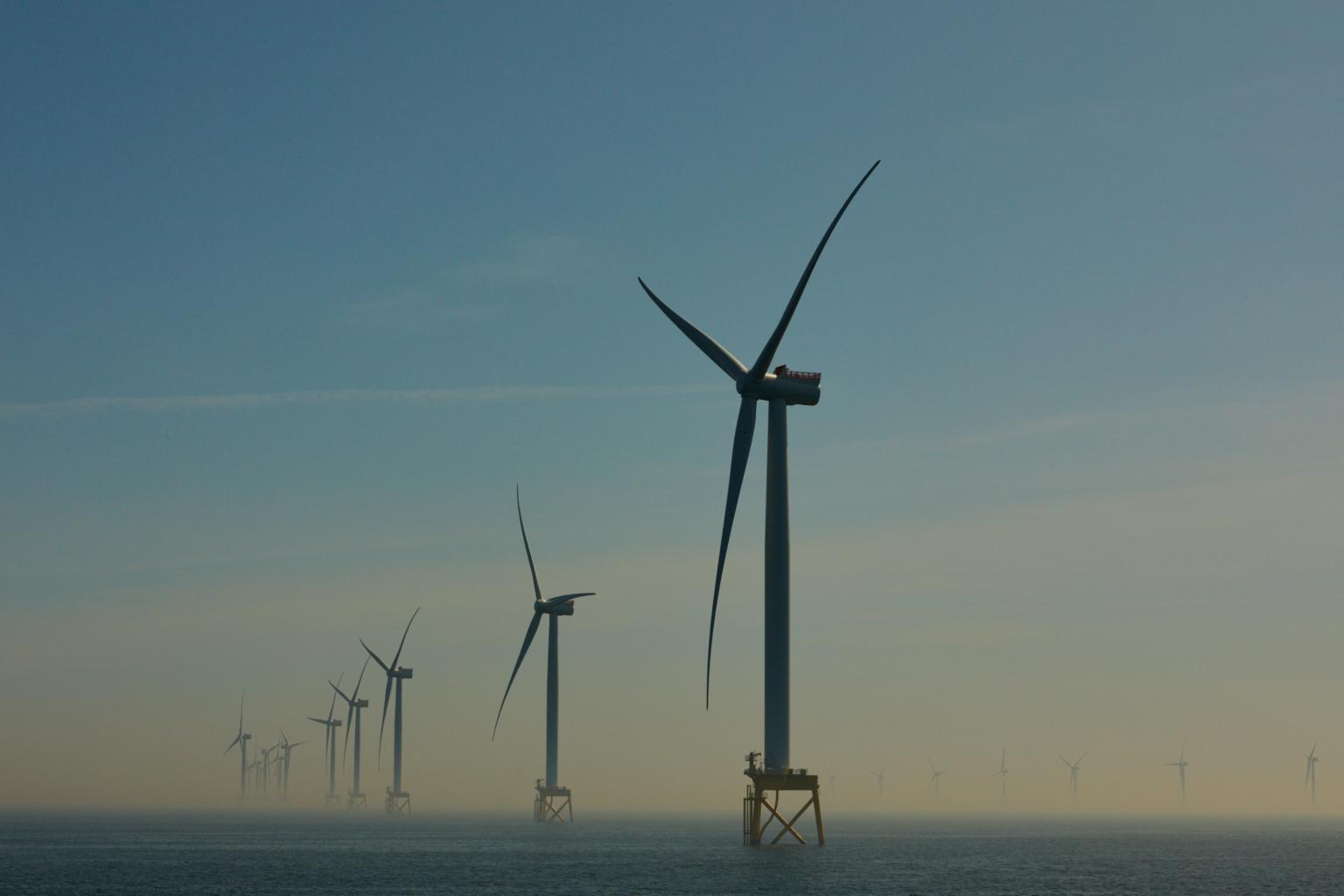Britain sets out net-zero strategy as it gears up to host COP26 climate talks
Sign up now: Get ST's newsletters delivered to your inbox

The British government aims to be powered entirely by clean electricity by 2035.
PHOTO: NYTIMES
Follow topic:
LONDON (REUTERS) - British Prime Minister Boris Johnson on Tuesday (Oct 20) set out his ambition for a green revolution that he hopes will force Western economies to kick their addiction to fossil fuels.
Britain at the end of the month hosts the COP26 United Nation climate talks in Glasgow, Scotland, which aim to strengthen global action on global warming.
"With the major climate summit COP26 just around the corner, our strategy sets the example for other countries to build back greener, too, as we lead the charge towards global net zero," Mr Johnson said.
The Prime Minister, who once expressed scepticism about climate change, presented his 368-page net-zero strategy as a document that would put Britain at the vanguard of green economies.
"The UK leads the world in the race to net zero," he said in the foreword to Net Zero Strategy: Build Back Greener.
"The likes of China and Russia are following our lead with their own net-zero targets, as prices tumble and green tech becomes the global norm," he said.
In 2019, Britain became the first Group of 7 member to set a net-zero emissions target for 2050, which will require drastic changes in the way Britons travel, heat their homes and consume electricity.
The net-zero strategy is essentially a series of long-term promises, some with caveats, to shift the world's fifth-largest economy towards green technologies - from moving to clean electricity "subject to security and supply" to "setting a path" to low-carbon heating in British homes.
It aims to secure 440,000 jobs and unlock £90 billion (S$167 billion) of private investment by 2030.
It also aims to help Britain gain a competitive edge in low-carbon technologies such as with heat pumps, electric vehicles, carbon capture and storage, and hydrogen.
The government aims to be powered entirely by clean electricity, subject to security of supply, by 2035. It aims to have 40 gigawatts (GW) of offshore wind power by 2030, as well as 1GW of floating offshore wind power.
Britain will also deliver 5GW of hydrogen production capacity by 2030, while cutting its emissions from oil and gas by half.
The government aims to deploy at least five million tonnes of CO2 a year of engineered greenhouse gas removals by 2030.
"Current gas price spikes underline the need to get off hydrocarbons as quickly as possible, but we will manage the transition in a way that protects jobs and investment, uses existing infrastructure, maintains security of supply, and minimises environmental impacts," the strategy said.
Gas and power prices in Britain have risen by more than 250 per cent this year, forcing some energy suppliers out of business and boosting consumer energy bills.
Mr Simone Rossi, chief executive of energy firm EDF in Britain, which operates the British nuclear plant fleet said: "Rising gas prices are putting pressure on people's energy bills now, so we need to make urgent progress with building proven, low-carbon energy generation that keeps costs steady and supplies secure."
Many of Britain's nuclear plants are ageing. Some are being decommissioned earlier than scheduled and EDF's new Hinkley Point C plant will not be online until 2026.
EDF also plans to build a plant at Sizewell in Suffolk, subject to the right investment framework.
The government said it would secure a final investment decision on a large-scale nuclear plant by the end of this Parliament.
It will also launch a new £120 million "future nuclear enabling fund" for future nuclear technologies, including small modular reactors, with a number of potential sites such as Wylfa in north Wales.
Earlier on Tuesday, Mr Johnson announced nearly £10 billion of private investment in green projects at an investment summit in London.

